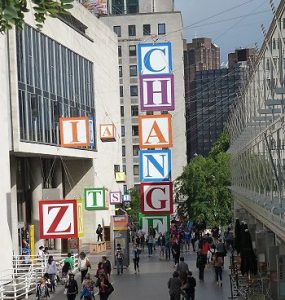What is EMDR?
EMDR stands for 'Eye Movement Desensitisation and Reprocessing'
EMDR involves talking and bilateral stimulation, which refers to the process of alternately stimulating the left and right sides of your brain, typically eye movements, tapping or holding handheld buzzers. The aim is to reduce distress and negative beliefs associated with past overwhelming or traumatic experiences that are having a significant impact on our mental health. This short animation explains how EMDR can be used to help adults.
In EMDR therapy, the meaning of painful events is transformed on an emotional level. For instance, a bereaved parent who is feeling 'It's my fault, I should have protected her' is able to process the trauma and see that ' it was an accident, I did all I could'.
You might feel like you know the answer logically but somehow your heart doesn't quite believe it. EMDR can get mind and heart to 'link up'.

What happens during EMDR?
I will spend some time doing some relaxation exercises with you, which could include 'safe or calm place' exercises, guided visualisation, deep muscle relaxation, breathing retraining, imagining resources etc.
Once we feel that you are sufficiently prepared, we can then target a distressing memory with the eye movements or other forms of left-right alternating stimulation, such as sound or taps.
I will ask you to select an image that represents the distressing event.
You will then be asked to think about negative thoughts in relation to the memory and to think of an alternative positive thought that you would like to believe about yourself. You will also be asked about your feelings, the amount of distress you feel and where you feel it in your body.
I will then begin the eye movements while you bring to mind the picture, feelings and bodily sensations and the negative thoughts or beliefs.
I will move their fingers rapidly from side to side while you allow you eyes to follow the movement or may gently tap on either side of your knees or on your hands. While following the movements you allow your thoughts to follow where they need to and just let whatever comes up, come up without censoring.
After each set of eye movements I will ask you what came to mind or what you noticed during the eye movements. During the eye movements you may experience the distressing event quite intensely to start with, but this distress generally reduces as the memory is processed with EMDR. You are free to stop at any time, just raise your hand to indicate you want to stop.
I will continue with the eye movements until your distress is reduced as much as possible. I will then ask you to think about your positive thought and also check whether there is any part of your body where you still feel distress. Before the end of the session, I will give you time to feel calm again, using the safe-pleasant place exercise or relaxation techniques.
The important thing to remember is that it is your own brain that will be doing the healing and that you are the one in control.
How can EMDR help with Bereavement? is an article on how EMDR can help that I wrote for Counselling Directory when working for Mind in West Essex
More information...
A wealth of research has been conducted demonstrating its benefits in treating psychological trauma arising from experiences as diverse as war related experiences, childhood sexual and/or physical abuse or neglect, natural disaster, assault, surgical trauma, road traffic accidents and workplace accidents. Since its original development, EMDR is also increasingly used to help individuals with other issues and performance anxiety.
Often, when someone is involved in a distressing or traumatic event, the memory seems to get locked in the nervous system with the original picture, sounds, thoughts, feelings and so on. The brain seems to be overwhelmed and unable to process the experience like a normal memory.
Since the experience is locked there, it continues to be triggered whenever a reminder comes up. It can be the basis for a lot of discomfort and sometimes a lot of negative emotions such as fear and helplessness that we can’t seem to control.
These are really the emotions connected with the old experience that are being triggered.
In EMDR, alternating left-right stimulation of the brain with eye movements or sounds or taps is used.
These seem to unlock the nervous system and allow the brain to process the experience. This is similar to what happens in REM or dream sleep: the eye movements may be involved in processing the unconscious material.
Disturbing events can be stored in the brain in an isolated memory network. This prevents learning from taking place. The old material just keeps getting triggered over and over again.
In another part of your brain, in a separate network, is most of the information you need to resolve it. It’s just prevented from linking up to the old stuff. Once processing starts with EMDR, the two networks can link up. New information can come to mind and resolve old problems.
In successful EMDR therapy, the meaning of painful events is transformed on an emotional level. For instance, a bereaved parent who is feeling 'It's my fault, I should have protected her' is able to see that ' it was an accident, I did all I could'.